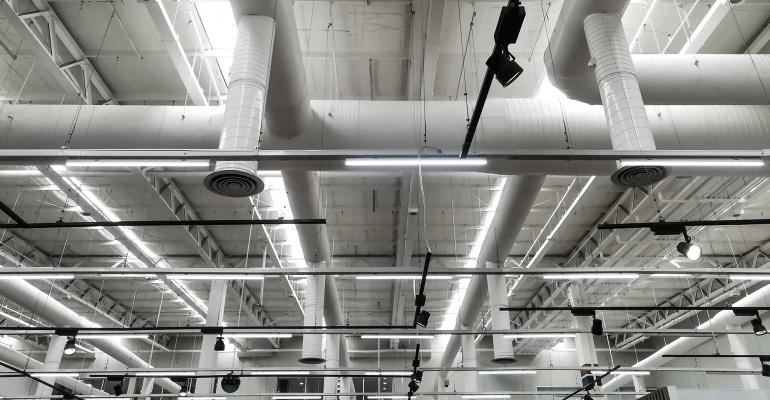In commercial real estate, the impact of the coronavirus pandemic and related shutdowns has led to profound and seismic shifts. To some extent, those shifts reflect an acceleration of trends that were already underway. One of the most noteworthy of those is the ongoing evolution of the real estate market that is yielding new investment opportunities in favor of the industrial sector.
Some have argued that industrial development is the next big frontier for retail, perhaps even the “savior” of a segment that is undergoing significant change. It’s clear that the intersection of industrial and retail is creating intriguing new features on the commercial development landscape.
Understanding why that might be the case starts with understanding current industrial investment opportunities that complement retail—and what investors should look for while evaluating those deals—as well as an appreciation for the factors that shape the success of environments that integrate industrial and retail uses.
An evolving landscape
Since 2017, a total of 13.8 million sq. ft. of retail space has been converted to 15.5 million sq. ft. of industrial space across the country, according to CBRE.
Today, e-commerce and omni-channel models are growing at a remarkable rate. While some of that growth is accelerated by pandemic-driven considerations, a significant portion was already occurring and many of the new pandemic-related changes will be “sticky.” The critical final step in the supply chain—the last mile—has also become a pivotal piece of the development puzzle.
With retailers reimagining their entire supply chain and recognizing the need to fulfill online orders without having to rely on archaic bricks-and-mortar solutions, new development opportunities are emerging for delivery stations and distribution centers within industrial—and increasingly—retail environments. Investors looking at their portfolios are seeing infill as an obvious focus, as the chance to buy and covert existing retail that is failing or vacant often presents a favorable value equation. The same CBRE study noted that out of the 59 retail to industrial projects completed, proposed or underway since 2017, 40 projects were conversions or adaptive reuse.
Whether buying and converting existing inventory, or looking for new inventory, the industrial-retail frontier may be the saving grace for a pandemic-impacted portfolio.
Drawing the lines
What do the contours of this new landscape look like? Where do you draw the lines, and how do you strike a balance between industrial and retail uses? For investors, assessing stand-alone uses is relatively straightforward. However, multi-tenant environments raise the question of how tenants and municipalities will view non-retail uses adjacent to functional retail. Some are mitigating potential discomfort by designing facilities with retail in the front and distribution infrastructure in the back. Inevitably, the success or failure of some industrial-retail conversions will depend on the ability of developers and investors to cultivate the right tenant mix and maneuver the local political environment.
There is also an inverse relationship between opportunity and complexity, which is why malls and inline spaces—where investors may need to have the patience and resources to reshape the tenant mix over time—are more of a long-term play. In the near term, stand-alone spaces (power center inline spaces, large unattached boxes like a former Sears or Kmart space, or B- and C-level malls that have gone dark) may represent the most straightforward investment in retail-industrial opportunities.
Priorities and perspectives
The Wall Street Journal reported higher inventory levels and the accelerating growth of e-commerce, which may require three times as much space as traditional distribution operations that serve stores. This could increase U.S. warehouse demand by as much as 400 million sq. ft. over the next two to three years.
Investors looking for retail-industrial deals should prioritize the same underlying fundamentals that characterize any sound retail opportunity: strong demographics and proximity to rooftops. With supply chain facilities, transportation and location remain critical, even if those fundamentals are not about consumers coming to you, but your ability to reach them.
While familiar retail considerations will inform smart supply chain investment decisions for retail conversions, the development process can be quite different. From site selection to zoning, planning, design and negotiations with tenants and municipalities, investors would be wise to identify a development partner with a proven track record of managing retail conversions and ground-up industrial/e-commerce development from beginning to end.
Revelations and reevaluation
Something that frequently surprises investors is just how economically sound these opportunities can be. Industrial-retail supply chain infill or redevelopment is often the highest and best use of space. Tenants are often willing to pay market rates for quality space in the right environment. In reality, there are many sites out there not suited for residential, hospitality or office. Elevating those sites by configuring them to meet the needs of a rapidly emerging new market is simply good business.
The big picture is that consumers aren’t really spending less, they are spending differently. The question for real estate developers and investors becomes: how do you adapt and take advantage?
Given the fact that many retail investors have long viewed online retail as the enemy, it’s ironic to think that the online market might actually end up being the savior. The convergence of online and bricks-and-mortar—and the supply chain uses required to make that convergence work—has turned out to be more compatible and complementary than many landlords and investors had previously imagined.
Steve Backman and Tracy Hammer are co-founders and partners of BH DevCo, a real estate development company specializing in build-to-suit delivery for national tenants in the e-commerce distribution and fulfillment space. They can be reached directly at [email protected] and [email protected].

